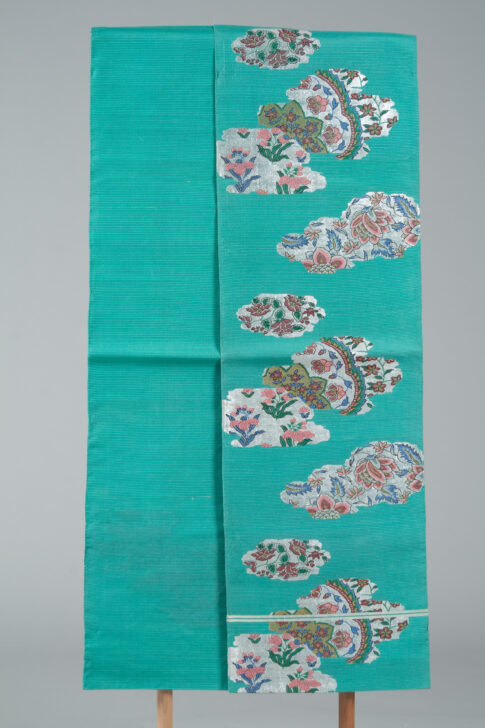Obi
Japanese

Description
Subject Matter:
This is a Nishiji and Fukuro Obi, in Rokutsu gara.
The use of light material suggests that this obi is likely meant for summer. The cloud-like brocade contains Chintz motifs originally imported from India, Javae and Persian during the Muromachi period (1333-1573) to early Edo Period (1603-1868).
Nishijin-ori textiles were developed in the Nishijin area of Kyoto city and has dominated the production of high-quality woven textiles since the fifteenth century. Nishiki is a type of vibrant silk brocade with vivid and luxurious images using various colorful and metallic (mainly gold and silver). The Rokutsuu gara type derives from a specific tying style, the Otaiko musubi. The areas of the obi that are visible in this style are patterned while the parts that are obscured are left blank. In terms of surface area, roughly sixty percent is patterned while forty percent is left blank.
Physical Description:
Silk Turquoise fukuro (single sided) obi made of light material containing thin silver stripes and interwoven silver and floral brocades.
Usage Rights:
If you are interested in using an image for a publication, please visit https://umma.umich.edu/request-image/ for more information and to fill out the online Image Rights and Reproductions Request Form.